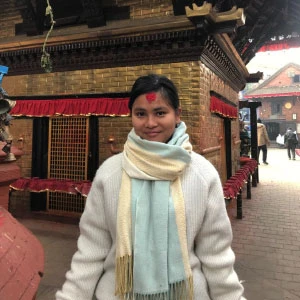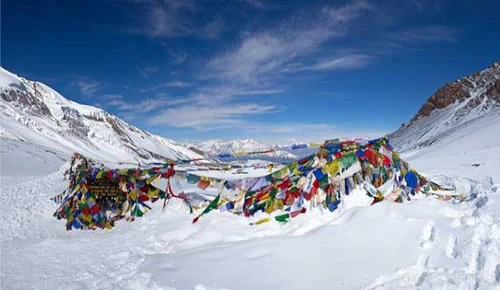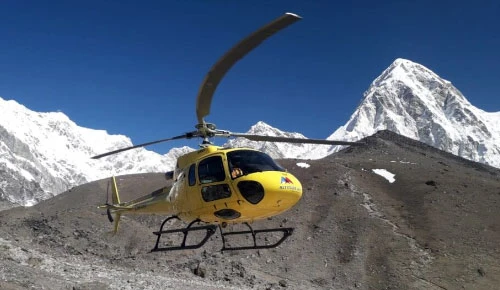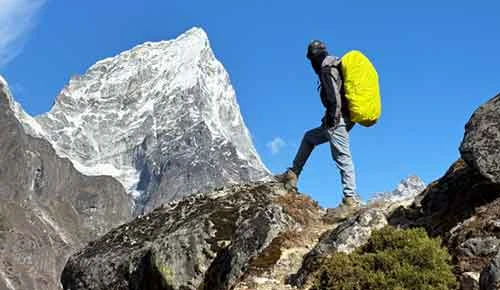Major Festivals of Mustang Region of Nepal
Hidden between the rain shadow of the Himalayas and the vast expanse of the Tibetan Plateau lies a land where time seems to have stood still, Mustang, the “Last Forbidden Kingdom” of Nepal. Here, rugged cliffs are painted in shades of ochre and crimson, ancient monasteries cling to the mountainsides, and the sound of prayer flags fluttering in the wind carries stories that are centuries old. Yet, what truly brings Mustang to life are its festivals that are vibrant, spiritual, and deeply rooted in Tibetan Buddhist traditions.
Each festival in Mustang is a living expression of faith, resilience, and harmony with nature. The people of Mustang along with their warm smiles and colorful attire, celebrate the cycles of life and seasons with rituals that blend myth and devotion. From the grand Tiji Festival in Lo Manthang, where masked dancers reenact the triumph of good over evil, to the spirited Yartung Horse Festival that fills the air with cheer and galloping hooves, these festivals capture the soul of Mustang like nothing else can.
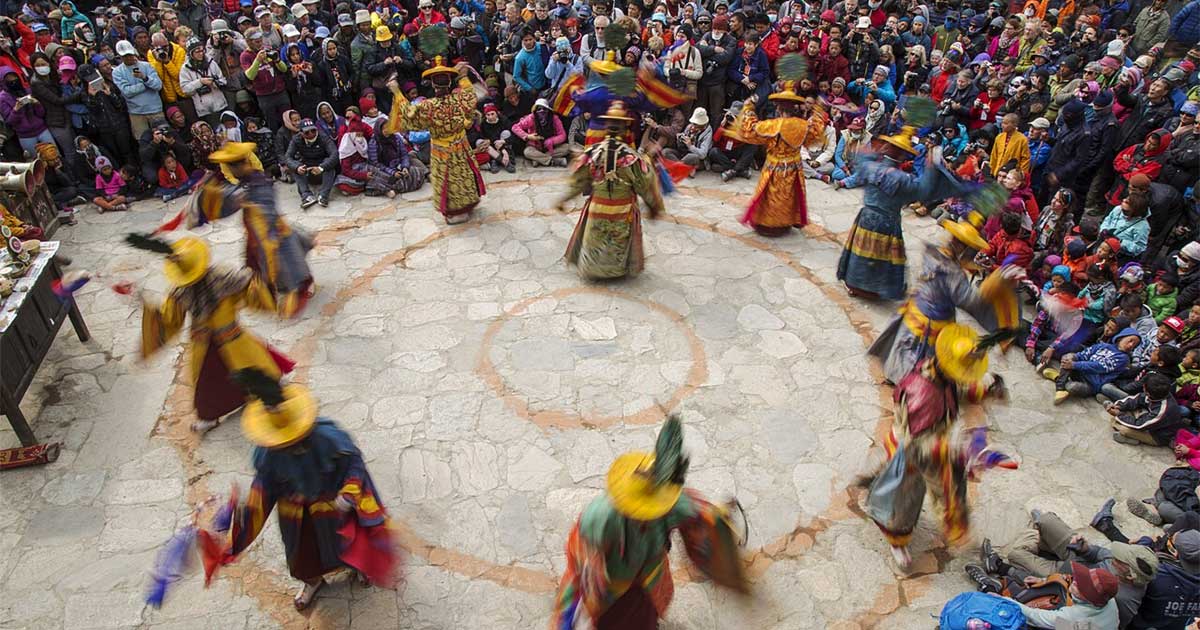
What makes these celebrations even more magical is their setting which amidst landscapes that look like paintings from another world. Picture yourself standing in the shadow of ancient chortens, watching monks perform sacred dances, or sipping butter tea with locals as laughter echoes through the high-altitude wind. In Mustang, festivals are invitations to witness, to feel, and to belong.
If you’re planning to explore the mystical Himalayas, timing your visit with one of Mustang’s festivals can transform your journey into something extraordinary. It’s where culture meets adventure, spirituality meets spectacle, and travelers become part of a story much older than themselves.
Table of Contents
Major Festivals in the Mustang Region of Nepal
Tiji Festival (The Festival of Renewal)
The Tiji Festival, often called “The Festival of Renewal,” is the heart and soul of Upper Mustang’s cultural identity — a mesmerizing three-day celebration held in the ancient walled city of Lo Manthang. Against the backdrop of arid cliffs, whitewashed monasteries, and snow-capped Himalayan peaks, this festival bursts into color and rhythm every May. Locals dressed in traditional attire gather to witness a centuries-old ritual reenacted by monks of the Choedhe Monastery. The festival’s origins trace back to the myth of Dorje Jono (Dorje Sonam), a deity who vanquished a powerful demon responsible for spreading chaos, drought, and suffering. Through intricate masked dances and dramatic performances, monks retell this sacred story — symbolizing the victory of good over evil and the restoration of harmony and balance in the world.
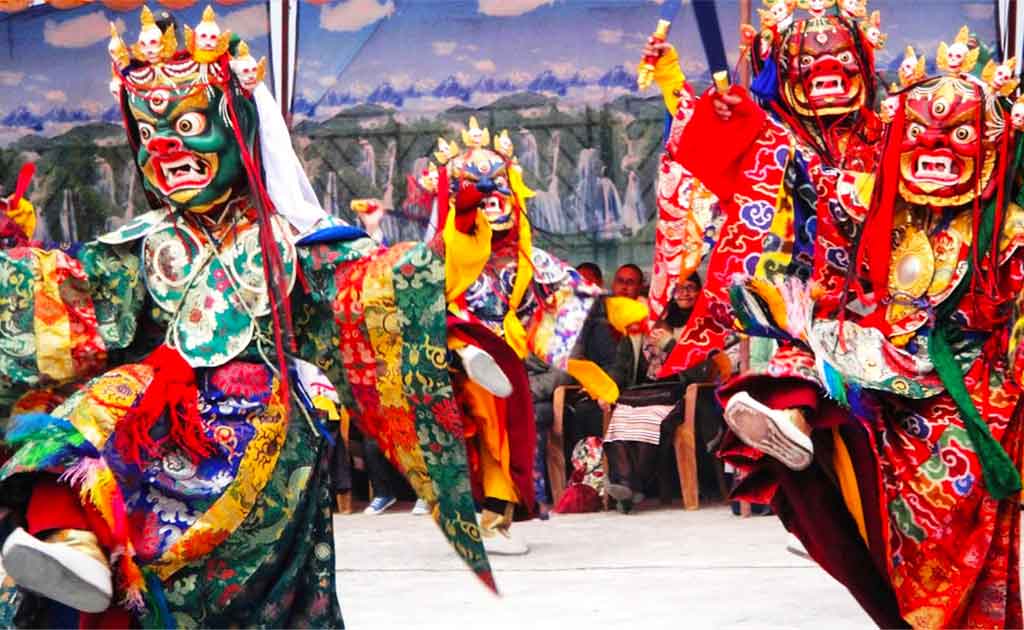
Each day of the Tiji Festival carries deep spiritual meaning. The first day begins with rituals to summon protective deities, purifying the environment and invoking blessings. The second day unfolds in a cascade of vibrant mask dances and drumbeats, symbolizing the demon’s weakening hold over the land. Finally, on the third day, the climactic ritual — ‘Tsa Chham’ — depicts Dorje Jono banishing the demon and sealing peace across Mustang. The air fills with the sound of traditional horns, cymbals, and chants as the community celebrates renewal, not just of the land, but of the soul.
For travelers, witnessing the Tiji Festival is like stepping into a living page of Tibetan mythology. The festival not only reflects the spiritual depth of Mustang but also showcases the region’s resilience in preserving its ancient Buddhist traditions despite time and isolation. Beyond the ritual dances and ceremonies, there’s a palpable sense of unity — villagers from across Mustang, pilgrims, and visitors join together in joyous celebration. The sight of monks swirling in golden robes, the fluttering of prayer flags in the mountain wind, and the echo of ancient horns make Tiji an unforgettable immersion into the mystical essence of the Himalayas.
Losar Festival (Tibetan New Year)
Losar, meaning “New Year” in Tibetan, is one of the most vibrant and spiritually uplifting festivals celebrated in the Mustang region. As winter begins to fade and the Himalayas glisten under the soft sunlight, villages across Mustang come alive with the sound of traditional horns, chants, and laughter. Homes are cleaned and decorated with colorful prayer flags and butter lamps to welcome positive energy and drive away the spirits of the old year. Locals dress in their finest traditional attire — women wear bright aprons and heavy jewelry, while men don long chubas — symbolizing prosperity and renewal. Monasteries such as those in Lo Manthang, Tsarang, and Muktinath become the heart of celebration, where monks perform ancient rituals, chant prayers, and offer tormas (butter sculptures) to deities for peace and good fortune in the coming year.
Unlike the typical New Year celebrations filled with fireworks, Losar radiates a calm yet powerful energy that blends devotion, joy, and community. Families gather to share chang (barley beer) and khapse (crispy biscuits), exchange blessings, and perform dances that tell stories of Buddhist legends. The air is thick with the aroma of butter tea and juniper incense, creating a feeling of warmth amidst the cold mountain winds. What makes Losar in Mustang truly special is its timeless connection to Tibetan heritage — it’s not merely a celebration of time passing, but a spiritual journey that reminds every soul of renewal, harmony, and gratitude. For travelers, being part of Losar in Mustang is like stepping into a living museum of Himalayan culture, where ancient traditions continue to breathe through every chant, smile, and flicker of the butter lamp.
Yartung Festival (Horse Racing Celebration)
The Yartung Festival is one of the most exhilarating and colorful celebrations in the Mustang region, marking the joyous end of summer and the monsoon season. Deeply rooted in Tibetan and Thakali traditions, this festival unites the entire community in a vibrant spectacle of horse racing, traditional songs, and dance. The word “Yartung” translates to “the end of summer,” and true to its meaning, it serves as a farewell to the warm months and a welcoming of the harvest season. The celebration is held mainly in Muktinath and Kagbeni villages, where the high-altitude air fills with the sound of cheering crowds, galloping hooves, and the rhythmic beat of traditional drums.
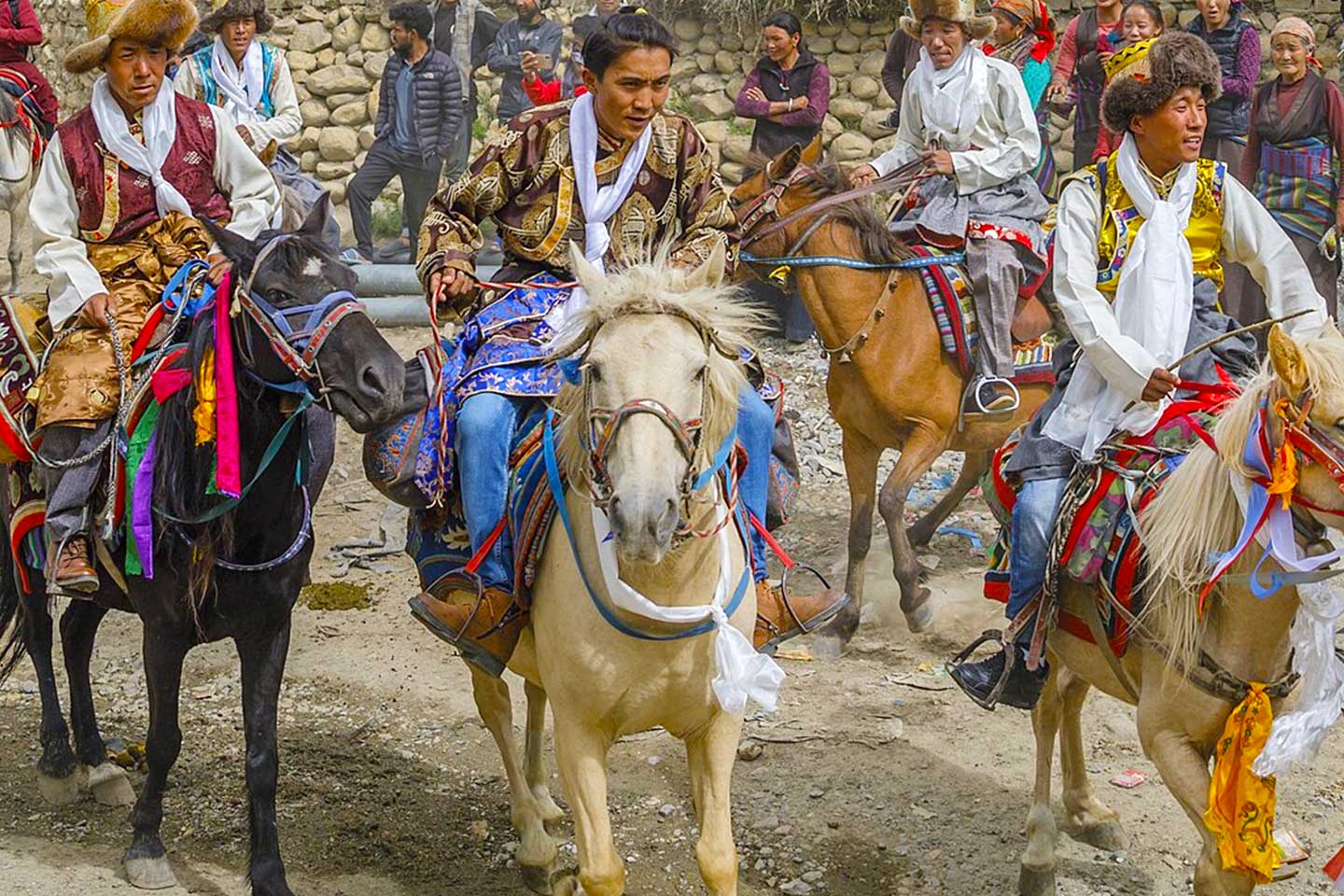
Beyond the thrill of competition, Yartung carries deep cultural and spiritual meaning. The festival begins with religious ceremonies in monasteries, where monks offer prayers for peace, prosperity, and a good harvest. Once the rituals conclude, the valley transforms into a festive arena where men and women adorn themselves in their finest traditional attire. Riders, often decorated in bright sashes and ornaments, race their horses with astonishing speed and skill across the dusty Mustang plains. These races aren’t merely about victory—they’re acts of devotion, courage, and community pride. Spectators join in with singing, dancing, and local wine, making it a heartwarming expression of Mustang’s lively spirit.
For travelers, witnessing the Yartung Festival offers a rare glimpse into the soul of Mustang’s people—a perfect blend of celebration, spirituality, and tradition set against the dramatic Himalayan backdrop. The energy of the races, the laughter of the villagers, and the stunning landscape create an unforgettable experience. Whether you’re a cultural enthusiast or a traveler seeking authentic local moments, Yartung is a festival that captures the essence of Himalayan joy and unity.
Duk Chu (Prayer Festival)
Among the hidden valleys and wind-swept cliffs of Mustang, the Duk Chu Festival unfolds as a deeply spiritual celebration of cleansing and renewal. This sacred prayer festival is a time when the entire community gathers to purify their surroundings and souls through collective chanting, meditation, and sacred rituals. Monks dressed in maroon robes chant ancient mantras inside centuries-old monasteries, their voices echoing through the cold mountain air. The rhythmic beating of drums, the deep hum of long horns, and the sweet fragrance of juniper incense create an atmosphere that feels both otherworldly and grounding. For the people of Mustang, Duk Chu is not just a festival—it’s a spiritual reset, believed to drive away negative energies and ensure peace, prosperity, and harmony for the year ahead.
During this time, monasteries like Lo Gekar, Chhoser, and Tsarang become centers of spiritual devotion. Locals and pilgrims alike light butter lamps, offer grains and flowers, and sit in silent reflection as monks perform intricate rituals of purification. Outside the monasteries, prayer flags flutter in the high Himalayan wind, symbolizing the spread of blessings and goodwill. While there are no grand processions or colorful dances like in other Mustang festivals, Duk Chu holds a quiet power in its stillness—a reminder that true celebration can also be found in silence, prayer, and connection to the divine. Visitors who witness Duk Chu often describe it as one of the most profound and meditative experiences in Mustang, a glimpse into the timeless heart of Tibetan Buddhist tradition that continues to thrive in these remote mountain valleys.
Cultural and Spiritual Significance of Mustang’s Festivals
The festivals of Mustang are not just colorful celebrations—they are living expressions of a culture that has remained remarkably intact for centuries, steeped in the spiritual rhythm of Tibetan Buddhism and the ancient Bon traditions. Each festival, from the dramatic Tiji dance of Lo Manthang to the spirited horse races of Yartung, is a window into the community’s values, beliefs, and reverence for life’s cycles. Monks in flowing robes, performing sacred mask dances and chanting ancient prayers, create an atmosphere charged with devotion, connecting the material world with the spiritual. The festivals serve as communal rituals, bringing together villagers from remote valleys, fostering a sense of unity, and passing down wisdom, myths, and customs through generations. They are living classrooms of ethics, compassion, and resilience, where every dance, prayer, and offering is a testament to Mustang’s enduring harmony between humans, nature, and the divine. To witness these celebrations is to step into a world where spirituality is not confined to monasteries but flows through the streets, homes, and hearts of the people, leaving every visitor profoundly touched by the region’s cultural soul.
Conclusion
The festivals of Mustang are a living tapestry of history, faith, and vibrant culture, where every dance, prayer, and ritual tells a story that has echoed through the Himalayan valleys for centuries.From the exhilarating mask dances of the Tiji Festival to the thunderous horse races of Yartung and the sacred rituals of Losar, these celebrations invite travelers to step into a world where time slows down, and the spirit of community, devotion, and joy reigns supreme. Experiencing a Mustang festival is also an unforgettable journey into the heart of Tibetan culture preserved in the rugged beauty of the Himalayas.
We offers a variety of ways to explore this magical region, whether it’s the classic Upper Mustang Trekking, a spiritual Muktinath Temple Tour – 4 Days, an adventurous Upper Mustang Jeep Tour – 7 Days, a festival-focused Upper Mustang Tiji Festival Jeep Tour, a breathtaking Upper Mustang Helicopter Tour, or the scenic Jomsom Trek. These thoughtfully curated packages ensure that every traveler can witness the festivals, landscapes, and traditions of Mustang in comfort and style, creating memories that linger long after the mountains fade from view.



